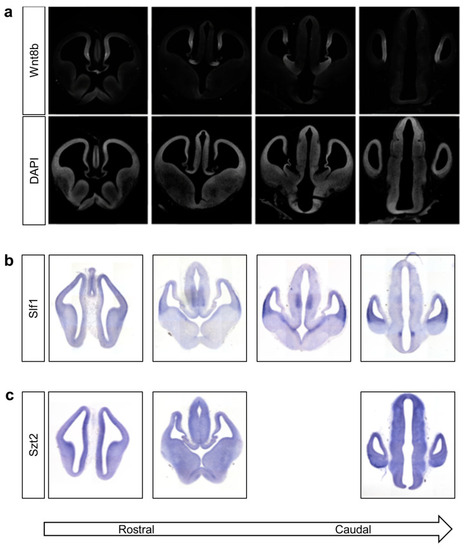- Title
-
Aicardi Syndrome Is a Genetically Heterogeneous Disorder
- Authors
- Ha, T.T., Burgess, R., Newman, M., Moey, C., Mandelstam, S.A., Gardner, A.E., Ivancevic, A.M., Pham, D., Kumar, R., Smith, N., Patel, C., Malone, S., Ryan, M.M., Calvert, S., van Eyk, C.L., Lardelli, M., Berkovic, S.F., Leventer, R.J., Richards, L.J., Scheffer, I.E., Gecz, J., Corbett, M.A.
- Source
- Full text @ Genes (Basel)
|
WNT8B p.Leu70Pro (p.L70P in this figure) affects protein function and structure. ( |
|
Phenotype analysis of morpholino mediated knockdown of Aicardi candidate genes in zebrafish embryos. ( PHENOTYPE:
|
|
Wnt8b and Slf1 have spatially restricted expression patterns in the developing mouse brain. Coronal 20 μm frozen sections of mouse brain harvested at embryonic day 12. ( |



